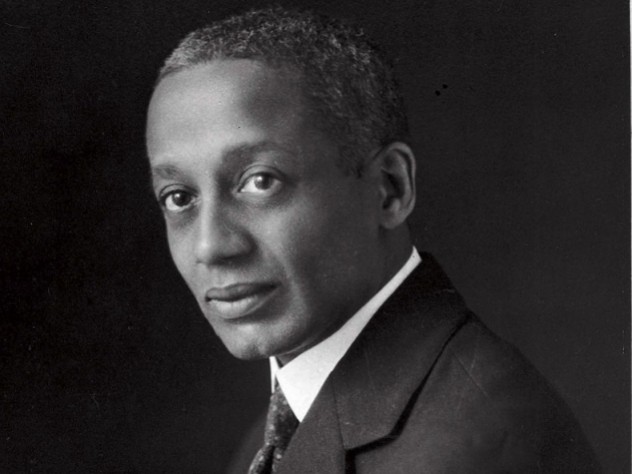via the OUP blog by Serinity Young

Illustration to The Book of Wonder Voyages by John D. Batten. Public domain via Wikimedia Commons
The sacred is where you find it. We would be foolish to ignore human awe in contemplating the eternal stability of the night sky and envy for the flight of birds that seemed to fly between the earthly, somewhat troublesome world of constant change, and what appeared to be eternal heavenly realms. The ancient depictions of winged females, and not winged males, suggest women were perceived as having some special power that men did not. Historically, this often formed the background for gender conflicts—what women want to do and what men will allow them to do as well as female indifference to the terms set by men. Aerial women in mythology represent power and freedom. They have been worshipped as bird goddesses, Valkyries, winged goddesses, and witches. These and other flying females from a wide variety of cultures are linked to sexuality, death and rebirth, or immortality.
Continue reading
==============================
Rediscovering Alain Locke and the project of black self-realization
via Arts & Letters Daily: Adam Kirsch in Harvard Magazine

Alain Locke in an undated photograph
Photograph courtesy of Moorland-Spingarn Research Center/Howard University
In the autumn of 1924, Alain Locke was enjoying the beauties of San Remo, Italy. But his mind and heart were back home in the United States—specifically, in Harlem, which was fast becoming the unofficial capital of black America. Locke—A.B. ’08, Ph.D. ’18—39 years old and a professor at Howard University, had been a leading light of the African-American intellectual world for almost 20 years, ever since he became the first black student to receive a Rhodes Scholarship. Now he was engaged in guest-editing a special issue of a magazine called Survey Graphic that would be devoted to Harlem. He enlisted as contributors some of the nation’s leading scholars and creative writers, black and white—from the historian Arthur Schomburg and the anthropologist Melville Herskovits to the poets Countee Cullen and Claude McKay. The issue was shaping up to be a major event: a quasi-official announcement of what would come to be known as the Harlem Renaissance.Continue reading
==============================
via the Guardian by John Patterson
War changed everything, destroying whole film industries and heralding a new era of realism, grit and shoots on location

Born directly out of the experience of desolation … The Best Years of Our Lives (1946). Photograph: Samuel Goldwyn/Sportsphoto Ltd/Allstar
The 1940s sundered the 20th century, dispatching an entire global framework and any number of abiding social orders to the ashcan of history. It offered both pinnacle and nadir of human achievement, along with 60 million dead, Auschwitz, Hiroshima and the iron curtain. Inevitably, they changed cinema for ever, too. By 1939, the major Hollywood studios had perfected studio artifice in films such as Gone with the Wind and The Wizard of Oz, and bestrode the cinematic world like a colossus; by 1950, they would face the triple threat of the upstart new medium of television; the arrival of the “red”-phobic House Un-American Activities Committee in Hollywood; and the 1948 supreme court decision ordering the break-up of the studios’ monopoly on production, distribution and exhibition.
Continue reading
==============================
via 3 Quarks Daily by Jonathan Kujawa
Apollonius of Perga (262-190 BC) was a well known and prolific geometer in ancient Greece. He is mainly known for his surviving work on the conic sections. Indeed, he gave us the definition of the ellipse, parabola, and hyperbola we use today. In some circles, Apollonius's most famous theorem is the fact that if you have three circles which are mutually tangent, then there always exactly two ways to add a fourth circle which is tangent to all three. That is, you can always fit exactly one new circle tangent to the original three within each interstice made by the existing circles. In the picture to the right [above] if you start with the three black circles, then you can complete the picture to four tangent circles by adding either of the gray circles.
Continue reading
==============================
via Interesting Literature
On one of Lawrence’s shortest poems
‘Self-Pity’ is one of the shortest poems D. H. Lawrence ever wrote, but it’s worth sharing here (with a few brief words of analysis) because, unlike Sons and Lovers or a poem like ‘Snake’, it is not as well-known among his oeuvre.
Continue reading
==============================
via Boing Boing by Clive Thompson

Every time I think I understand how weird platypuses are, I obtain additional information that further weirdifies them.
Continue reading
==============================
via the Big Think blog by Philip Perry
Researchers are starting to get a handle on why ancient creatures returned to the ocean after their ancient ancestors climbed out of it.
The ocean may be the origin of all life on Earth, but that isn’t to say that all the animals who evolved on land left the water behind forever. In fact, we’re starting to get a pretty good picture of why certain species that returned back to the water decided to do so and how they developed into the marine animals we know today. Paleontologists say creatures began exploring the land during the Silurian period (440-410 million years ago). No one is sure why this occurred. Some scientists say it may have been tight competition for resources in marine environments that pushed species to look for food elsewhere.
Continue reading
==============================
via About History by Alcibiades

DEFINITION AND INTRODUCTION
The definition of drugs is: any substance, apart from food, that, when injected, inhaled, smoked, consumed, absorbed via a patch on the skin, dissolved under the tongue, causes temporary physiological, and/or psychological change in the normal body. Although normally associated with the less legal use of drugs for their effects, remember that the medicine we consume counts as drug usage as well. Since ancient times, man has collected various roots, herbs and fungi for their beneficial effects. Crushing them with mortar and pestle, boiling, drying, even consuming them raw, our ancestors learned through trial and error. The result of trial and error was the beginning of medicine for health restorative properties, and the after-effects that cause physiological changes.
Continue reading
==============================
via Interesting Literature
On Lawrence’s fine poem about all things green
Was D. H. Lawrence (1885-1930) an imagist? He’s well-known as a novelist, slightly less celebrated as a poet and a writer of some truly wonderful short stories. But how should we categorise his poetry? Can he be labelled, and analysed as, ‘imagist’? Here is his fine short poem ‘Green’, which was published in the first anthology of imagist poetry, Des Imagistes, in 1914
Continue reading
==============================
via Boing Boing by Andrea James
Imagine being a bug or small bird who spots a beautiful orchid, only to learn upon closer inspection that it's covered in bugs who want to eat you.
There’s more here
No comments:
Post a Comment